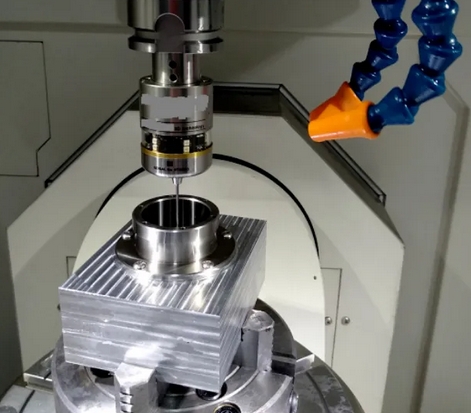
In today's manufacturing industry, the technology of high-precision deep blind hole machining has become increasingly important. It plays a key role in various precision industrial fields such as aerospace, mold manufacturing, automotive industry, among others. The special geometric characteristics and precision requirements of deep blind hole machining pose higher demands on the selection of machining processes and tools. This article aims to explore the technological challenges of high-precision deep blind hole machining and propose a series of possible solutions.
The main challenges of deep blind hole machining include:
- 1. Tool rigidity and stability: When machining deep holes, the increased overhang length of the tool can cause bending and vibration, affecting machining accuracy.
- 2. Chip removal issues: During the deep hole machining process, the path for chip removal is long, which can easily cause chip blockage, affecting machining efficiency and hole surface quality.
- 3. Cooling and lubrication: Due to the larger depth of the hole, it is difficult for the coolant to reach the cutting area, leading to poor heat dissipation conditions, which affects tool life and machining quality.
- 4. Precision control: Ensuring that the size accuracy and surface roughness of deep blind holes meet design requirements necessitates high-precision equipment and fine process control.
Faced with these challenges, the following solutions can be adopted:
- 1. Choose appropriate tools and materials: Use high-strength, high-rigidity tool materials such as solid carbide or high-speed steel, and design reasonable tool geometry angles to improve the bending strength and wear resistance of the tool.
- 2. Optimize cutting parameters: Find the optimal cutting conditions by adjusting cutting speed, feed rate, and cutting depth, reducing tool vibration and wear.
- 3. Use professional deep hole drilling techniques: For example, gun drilling, BTA (Boring and Trepanning Association) drilling, etc., these techniques can effectively solve chip removal and cooling issues.
- 4. Introduce a high-performance cooling system: Use a high-pressure cooling system or minimum quantity lubrication technology to deliver the coolant directly to the cutting point and improve cooling efficiency.
- 5. Implement a stepwise machining strategy: Adopt a multi-step machining method, such as drilling followed by reaming, to gradually achieve the final size and surface quality requirements.
In conclusion, high-precision deep blind hole machining is a field with extremely high technical requirements, testing the technological level and innovation capability of the manufacturing industry. By choosing appropriate tool materials, optimizing cutting parameters, applying professional drilling techniques, improving cooling lubrication systems, and adopting stepwise machining strategies, the machining quality and efficiency of deep blind holes can be effectively enhanced. With continuous technological advancements, high-precision deep blind hole machining will become more efficient and precise in the future, meeting the increasingly stringent industrial demands.





 Customer service 1
Customer service 1  Customer service 2
Customer service 2